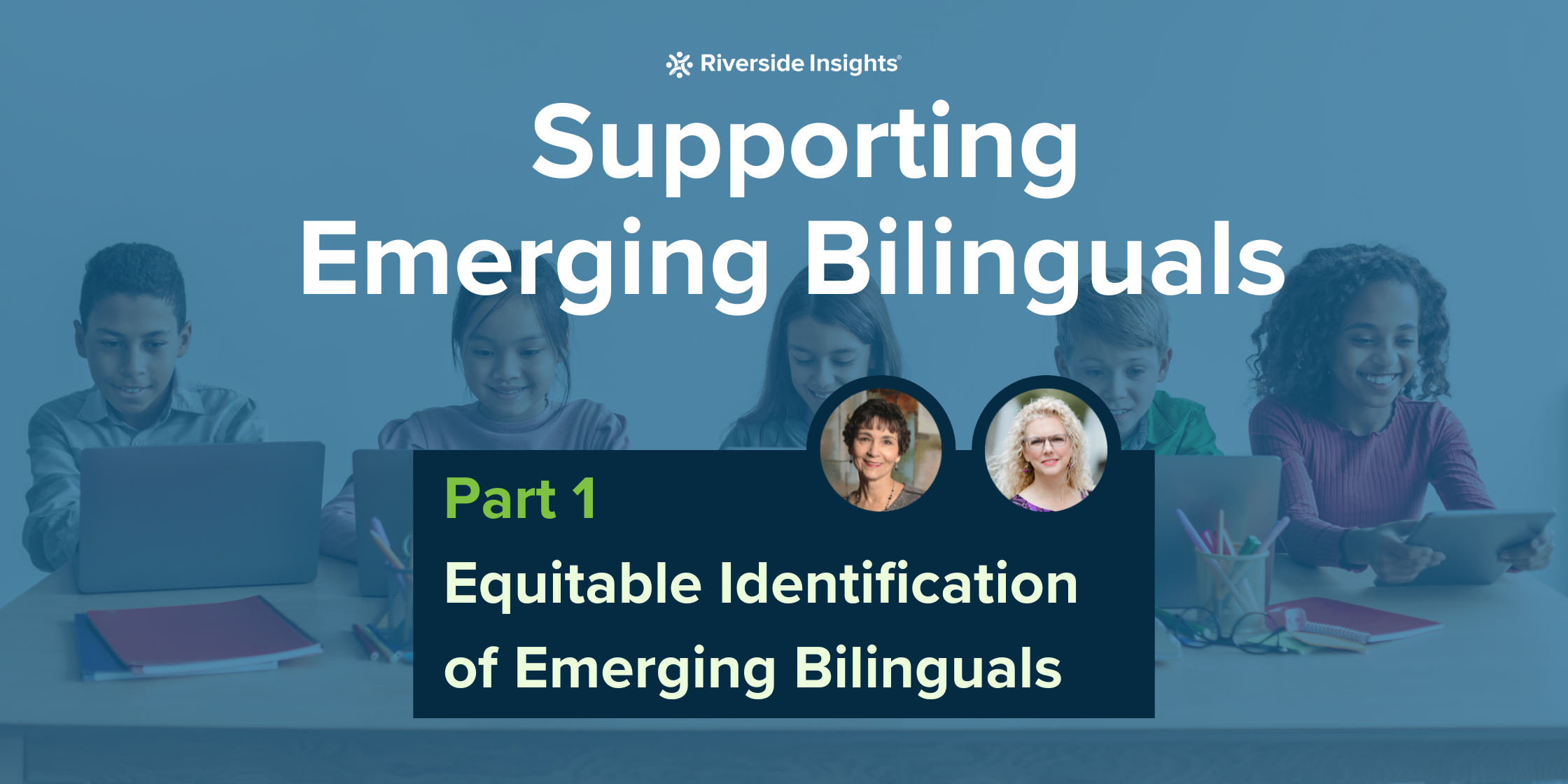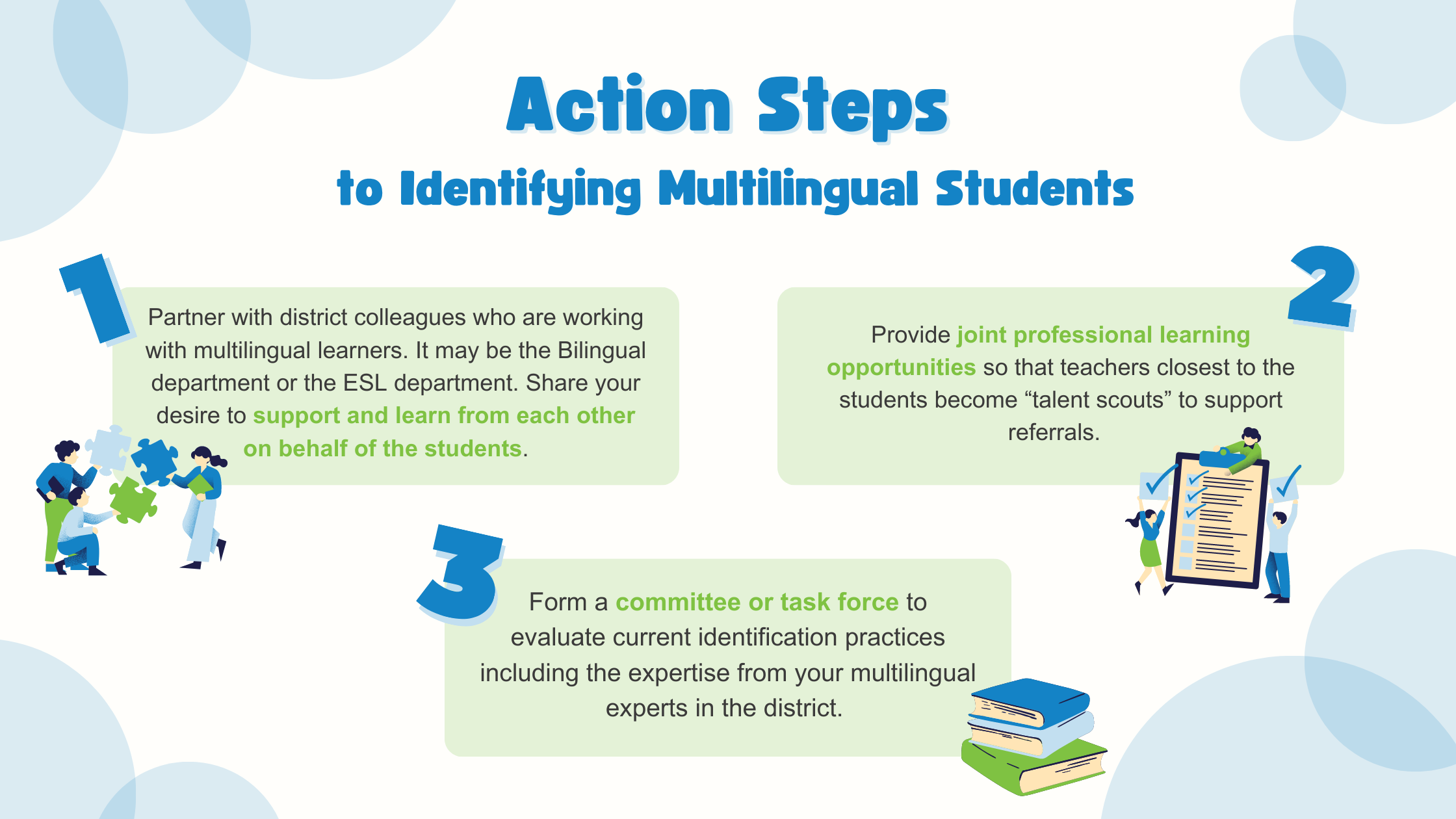Supporting Emerging Bilinguals: Part 1

How do we find the sweet spot of intersectionality between gifted and Emergent Bilingual?
Supporting Emerging Bilinguals
Part 1: Equitable Identification of Emerging Bilinguals
Even with a concerted effort to advance equitable identification practices, we are still under-identifying Emerging Bilingual students for gifted and talented programming. We know that practices such as universal screening can help identify students for gifted services, but we cannot rely strictly on gifted pedagogy to ensure the Emergent Bilingual students receive the instruction they need to demonstrate their abilities.
How do we find the sweet spot of intersectionality between gifted and Emergent Bilingual?
The first step must be ensuring Emerging Bilingual students are equitably identified for advanced and gifted services.
Marcy Voss, now retired from public education, has coordinated both gifted and ELL/Bilingual services and she helped launch a Two-Way Dual Language program in Boerne ISD. Her expertise is vital to our understanding of the identification and instructional services for GT-identified Emergent Bilingual students.
Ms. Voss suggests that all models of gifted identification must all be evaluated to ensure equitable opportunity for Emerging Bilingual students.
In pre-referral (including general interactions in the educational environment) and referral models of gifted identification, we oftentimes miss identifying Emerging Bilinguals due to:
- Misconceptions and misinformation
- Lack of understanding of language acquisition
- Deficit-based thinking and instruction
- Degree of cultural responsiveness of the campus / curriculum
In addition to these obstacles, the referral phase includes additional challenges. For example, multilingual specialists may not be involved in the referral and placement process.  Their specialized training and understanding of multilingual students should be included to create a complete and accurate depiction of the learner. Additionally, forms used to collect qualitative information (like teacher checklists) may be skewed to the dominant culture. Ms. Voss gives the example of the common prompt on many checklists: “The student asks many questions.” An emerging bilingual student may have curiosity but not feel comfortable asking questions, so the behavior is not exhibited for the teacher to observe.
Their specialized training and understanding of multilingual students should be included to create a complete and accurate depiction of the learner. Additionally, forms used to collect qualitative information (like teacher checklists) may be skewed to the dominant culture. Ms. Voss gives the example of the common prompt on many checklists: “The student asks many questions.” An emerging bilingual student may have curiosity but not feel comfortable asking questions, so the behavior is not exhibited for the teacher to observe.
Districts that use assessments as part of the gifted identification process often utilize a nonverbal assessment, or one without words, to find more Emerging Bilingual students who need gifted services. Another strategy commonly used is testing in the native language. However, many multilingual students do not have proficiency or mastery in English nor their native language because of interrupted schooling, lack of schooling, or lack of exposure to what we would call “academic language”. The same schooling issues can make achievement tests true gatekeepers for these students.
Finally, regardless of the assessment used, if the national norming population does not match the multilingual population being tested, scores can be interpreted inaccurately. In this situation, local norming of various kinds can help identify students.
Throughout the entire gifted identification process, multilingual students can get overlooked in the placement phase in at least three ways:
- The placement committee may not understand how to apply the data information that has been collected.
- Families of the emerging bilingual students may not understand the importance of the services. Sometimes they decline to let their child participate.
- Students are placed in services that do not match their educational or instructional needs.
Ms. Voss offers the following action steps to help identify multilingual students for their needed gifted services.

Identifying multilingual students for needed gifted services is a worthy and vital part of gifted programming. What happens once they are identified?
Ms. Voss shares her experience, expertise, and wisdom in Part 2.
Click here to read.
Marcy has a wealth of knowledge and she shares it so freely in her love for students. Dive deeper into this topic with her at the following links:
- TAGT Podcast
- Teaching MLs Podcast
- Recognizinging the Gift: Identifying Gifted English Learners (Seidlitz Education)
- Gifted and Talented Multilingual Learners (Seidlitz Education) site
- Who Are Gifted Multilingual Learners and How Do We Support Them (Seidlitz Education) blog


.png?width=900&name=Copy%20of%20Copy%20of%20Copy%20of%20BEAS%20Blog%20Banner%20Pt.%201%20(2).png)

-1.png)